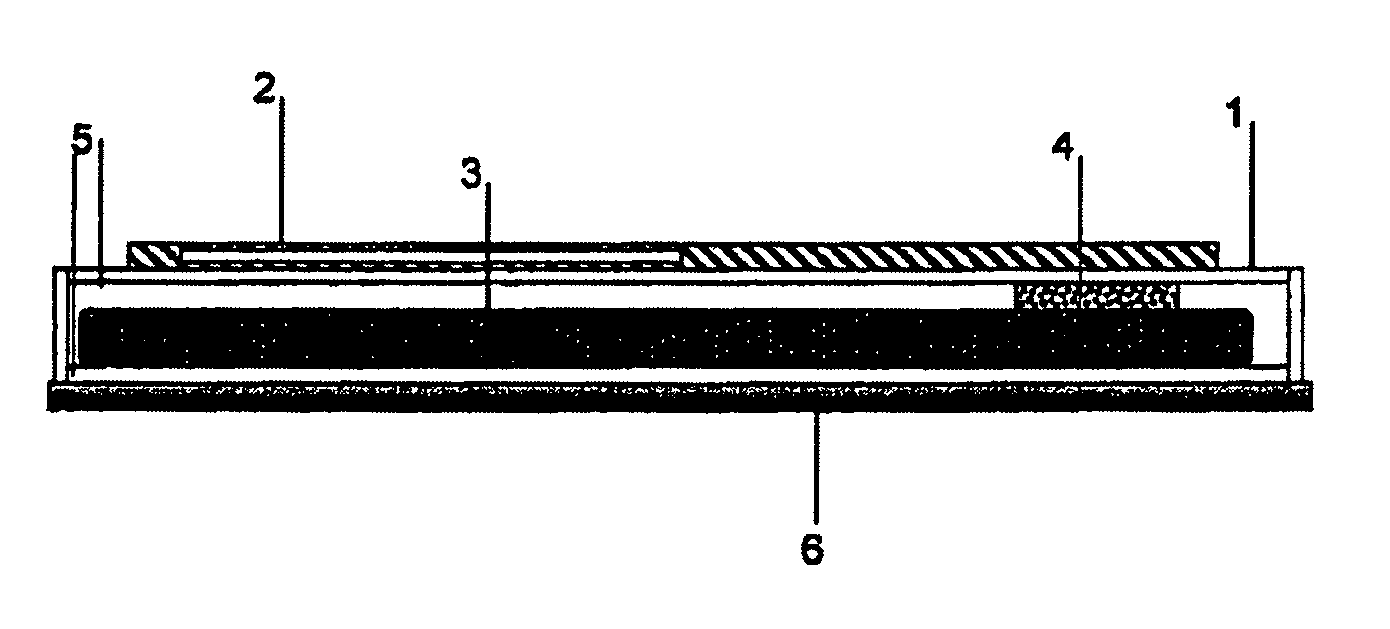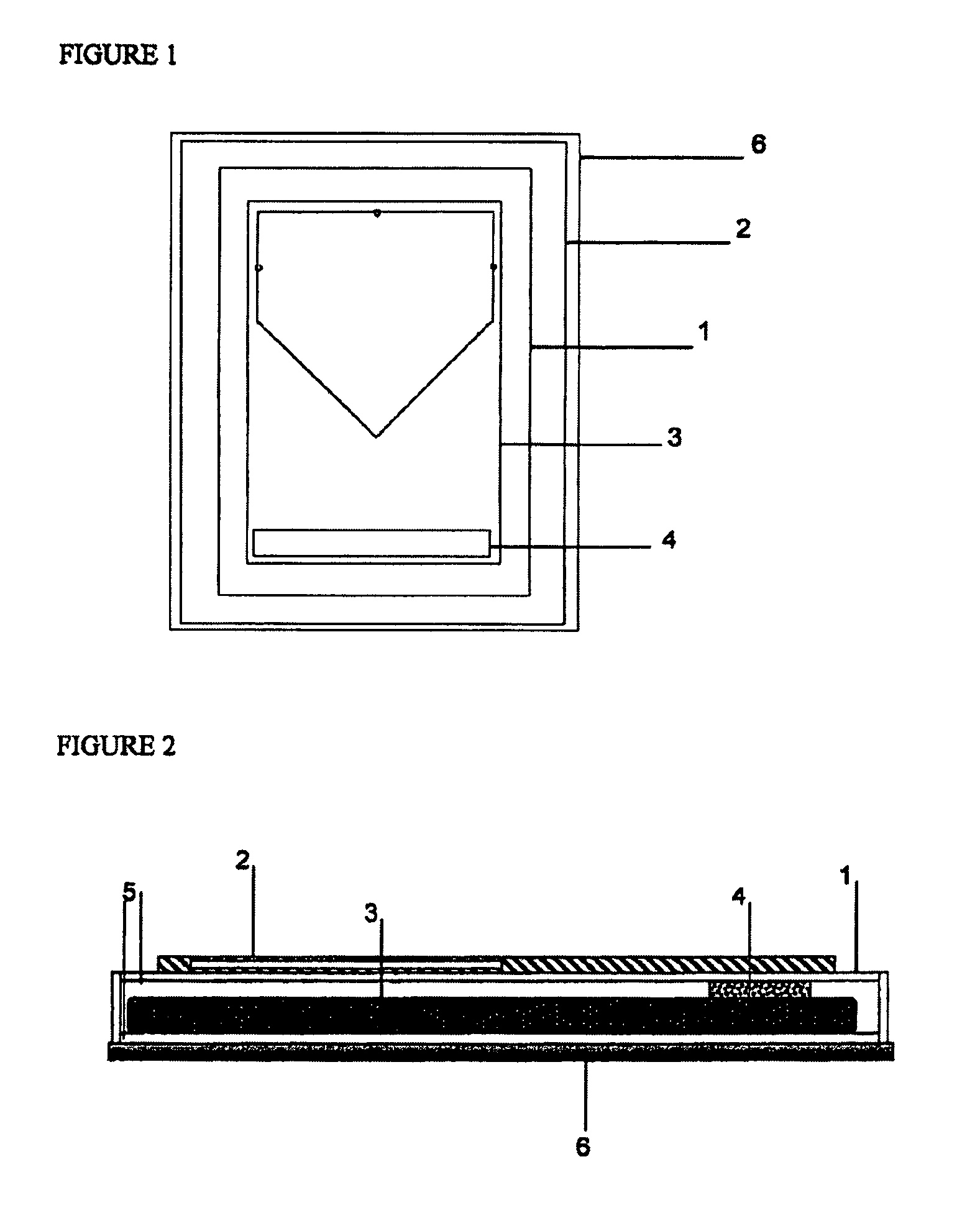Intelligent temperature indicator label and method
a technology of intelligent temperature indicators and labels, applied in the field of intelligent labels, can solve the problems of inability to easily monitor the color change to yellow, affecting the shelf life of products stored in unfavorable conditions, and affecting the stability of indicator materials, so as to prevent leakage and maintain stability. the effect of indicator materials
- Summary
- Abstract
- Description
- Claims
- Application Information
AI Technical Summary
Benefits of technology
Problems solved by technology
Method used
Image
Examples
examples
Defrost Indicator Example
[0060]In one exemplary embodiment of the defrost indicator, the solid gel layer includes alizarine as a pH indicator, which also behaves as a dye substance. The reactive absorbed membrane layer contains an acid solution. The acid solution dissolves in the solvent released by the solidified gel layer upon melting, and is reabsorbed into the solidified gel layer, resulting in a change in the color of the solidified gel layer. The color change in the defrost indicator is due to the exposure of the alizarine to acidic conditions.
Time-Temperature Indicator Example
[0061]In one exemplary embodiment of the time-temperature indicator, the solidified gel layer includes glucose as the substrate, phenolphthalein as the dye solution, a buffer, and agar as the thickening agent. The enzyme present in the reactive absorbed membrane layer is a glucoseoxidase, which is dissolved in the solvent released by the solidified gel layer upon melting. The glucoseoxidase solution is r...
PUM
| Property | Measurement | Unit |
|---|---|---|
| temperature | aaaaa | aaaaa |
| temperatures | aaaaa | aaaaa |
| temperature | aaaaa | aaaaa |
Abstract
Description
Claims
Application Information
 Login to View More
Login to View More - R&D
- Intellectual Property
- Life Sciences
- Materials
- Tech Scout
- Unparalleled Data Quality
- Higher Quality Content
- 60% Fewer Hallucinations
Browse by: Latest US Patents, China's latest patents, Technical Efficacy Thesaurus, Application Domain, Technology Topic, Popular Technical Reports.
© 2025 PatSnap. All rights reserved.Legal|Privacy policy|Modern Slavery Act Transparency Statement|Sitemap|About US| Contact US: help@patsnap.com


